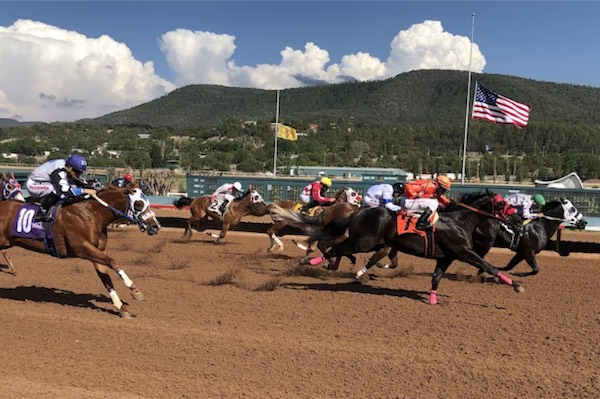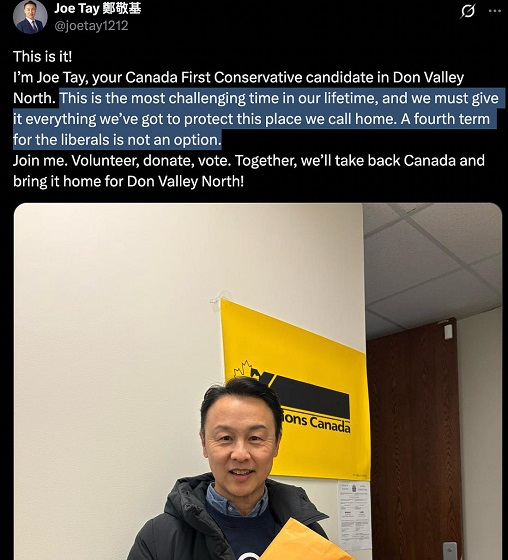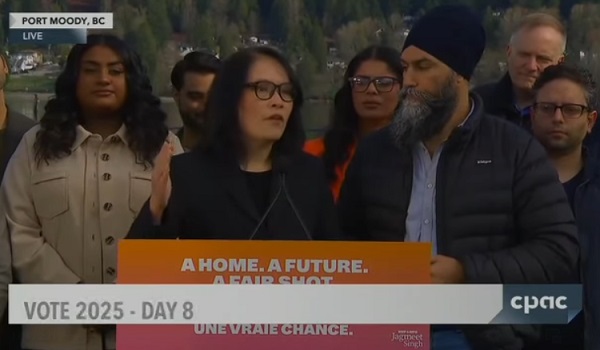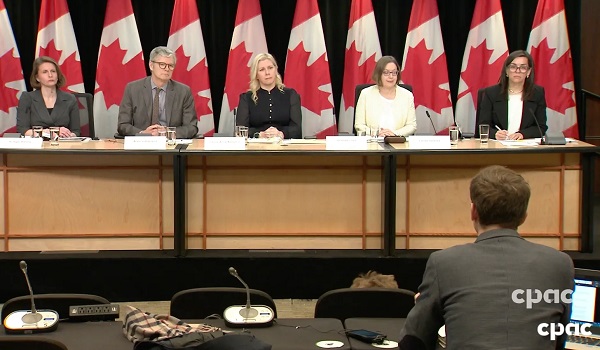Also Interesting
All You Need To Know About The 2022 Breeders’ Cup

One of the best horse race events, the Breeders’ Cup, will happen this November 4 & 5 at Keeneland. It features the top horses from all over the globe vying for some of the richest awards in racing.
This year’s Breeders’ Cup will include three of the finest prestigious Grade 1 races in the world, including the G1 Breeders’ Cup Classic, rated as the 4th most prominent race on the calendar. But what must every fan know before the event that happens in the next few weeks?
Aside from the strongest racehorses and the festive atmosphere of the Breeders’ Cup Classic, every horse racing fan has the chance to bet and win. Like any other sports betting game, horse racing provides massive betting games that can ultimately grow your bankroll. Hence, before you cheer on your top horses and lay your bets, here’s all you need to know about the 2022 Breeders’ Cup.
Breeders’ Cup At Keeneland
The Breeders’ Cup switches over new tracks each year as per tradition. For this year’s event staging, the action returns to Keeneland after an exciting year of racing at the Del Mar race track last November. The Breeders’ Cup race will be held on this track for the third time, and the biggest racehorses will race over Keeneland for the second time in the last few years.
The last time the top contenders from challenge series were held at Keeneland was in 2020 when Authentic triumphed in the legendary Classic by a thrilling margin of 2 1/4 lengths. Tarnawa, who won the Turf, and Knicks Go, who won the Dirt Mile, were two other notable winners at that meet.
Thrilling Breeders’ Classic Matches
The Breeders’ Cup Classic is generally one of the major events at the Breeders’ Cup, and it will be this November as well. As bettors assess whether the three-year-old horses will be capable of competing with the older horses, it will provide us with our first look at them in open-age competition for this year. Horse racing enthusiasts will get extremely thrilled for the event this year as Flightline, trained by John Sadler, appears to be the strongest bet.
The four-year-old colt has been in exceptional form all season and a start in the Breeders Classic will surely be overwhelming given that he won at Del Mar for the G1 Pacific Classic over 1 1/4 miles while recording the fastest speed Figure in almost ten years. Epicenter, who finished second in the Kentucky Derby, returned to take the finish line first in the G1 Travers, and the rest of the highly intriguing lineup includes Happy Saver, Life Is Good, and Olympiad.
European Runners For Turf Action
This year, the turf racing action is anticipated to draw some interesting racehorses from all around the world, so it’s not only about the local competitors on the dirt. European-trained racehorse trainers had triumphed in recent years on the Turf, particularly in 2021 when Yibir, who was coached by Charlie Appleby, won the Turf.
The winner from the previous year will return to defend the title after a commanding comeback to victory in the Grade 2 Princess of Wales Stakes. Adayar, the winner of the Epsom Derby in 2021, and Hurricane Lane, the St. Leger champion from a year ago, are two other possible Godolphin competitors.
One of the most gifted European racehorses, Mishriff might recover from his second-place finish in the Grade 1 Juddmonte International if he returns home. European Breeders’ Classic candidate Desert Crown, who won the Epsom Derby, maybe in the lead.
Another promising candidate would be Vadeni for Jean Claude-Rouget. With the possible exception of Grade 1 champion Coral-Eclipse at Sandown, where he defeated Mishriff and Native Trail, the three-year-old has competed nearly exclusively in France this season.
To determine which contenders we might see at Keeneland, numerous connections may have to choose between entering their horses in the Grade 1 Prix de l’Arc de Triomphe and competing on the Turf.
2022 Breeder’s Cup Key Races
The Classic is generally the most difficult thoroughbred horse race in the entire world. It has pot money of 6.1 million. It has developed through time to be the final and fourth race in the Thoroughbred racing Grand Slam.
Also, the 2022 Breeders Cup Turf is the second most attended event in the Championship, with a $4 million payoff. The 1.5-mile course, which is the typical European classic distance, was designed for fans from throughout the world.
Final Thoughts
Horse racing enthusiasts always have excellent stories to share in November. If you’re one of them, you can see one of the sport’s fiercest competitions. On November 4 and 5, 2022, the Keeneland racing field in Lexington will host the Breeders’ Cup World Championship.
That said, the most talented thoroughbreds in the world will compete in the 39th running of this classic race. The competition has a $31 million prize pool, with the Breeders’ Cup Classic as the Championship race with the highest purse, coming in at $6 million.
Also Interesting
The bizarre story of Taro Tsujimoto

The National Hockey League (NHL) has seen its fair share of strange moments, but few compare to the bizarre and hilarious tale of Taro Tsujimoto, a player who never existed. His “selection” in the 1974 NHL Draft remains one of the most legendary pranks in hockey history. If you want to wager on actual players, making the 1xBet app download is definitely a great idea.
In the 1970s, the NHL Draft was a much less glamorous event than today. It was a tedious process conducted over the phone, with teams calling in their picks. The 3 biggest highlights of what happened during that year’s draft were:
- the draft dragged on for hours;
- there were multiple rounds and teams selecting unknown prospects from obscure leagues;
- frustrated with the monotony, Buffalo Sabres general manager Punch Imlach decided to have a little fun.
As the 11th round approached, Imlach instructed his team’s representative to draft Taro Tsujimoto, a supposed forward from the Tokyo Katanas of the Japan Ice Hockey League. The name sounded authentic enough. The league officials, unfamiliar with Japanese hockey, accepted the pick without question. By downloading the 1xBet app you will also be able to wager on great NHL teams too.
A small problem
There was a small problem with all of this, as 2 things didn’t exist: Tsujimoto and the Tokyo Katanas. Imlach had completely fabricated the player as a joke, taking advantage of the NHL’s lack of verification. When it comes to NHL wagers, there is no better platform than the 1xBet Canada site.
For weeks, the league listed Tsujimoto as an official draft pick, and even some newspapers reported on Buffalo’s mysterious new Japanese prospect. Eventually, the Sabres admitted the hoax, and the NHL was forced to retroactively erase the selection from its records.
Despite being a fictional player, Taro Tsujimoto took on a life of his own. Buffalo Sabres fans embraced the prank, and over the years, his name has become a cult legend in hockey culture. Some fans even wore jerseys with “Tsujimoto” on the back. The joke persisted so much that when EA Sports released NHL video games, players could occasionally find Tsujimoto in the game’s draft pool as a hidden Easter egg.
More than just a prank, the story of Taro Tsujimoto highlights 2 things: the quirks of old-school sports management and the creativity of one of hockey’s most colorful executives. Today, with the draft process being highly scrutinized and broadcast live, such a prank would be impossible. But Tsujimoto’s legacy lives on as one of hockey’s greatest inside jokes. What is not a joke are the great rewards that a platform like the Canadian 1xBet site can give you.
Also Interesting
60% of Canadians gamble each month – why the industry is going from strength to strength

When it comes to regulating gambling, Canada has a somewhat relaxed approach. The Canadian Gaming Association oversees the industry, but it’s up to individual provinces to enact and enforce any laws relating to online casino gaming, sports betting, traditional casino gaming, and other forms of gambling.
Canada’s online casino gaming laws are not totally clear, but individual provinces are starting to put this right. Ontario was the first and did so when it launched its own regulated igaming market in April 2022. Now some other provinces have followed suit, creating a safer igaming environment for players in those provinces. Below is a look at gambling in Canada compared to other parts of the world, at gaming laws in Alberta compared to other provinces, and at the future of the Canadian, US, and UK gambling industries.
Canada: a forever love of gambling
Gambling in some form or other has always been popular in Canada. Way back in the 1990s, research found six in ten Canadians (60%) gambled every month. Additionally, four in ten (43%) spent between 1 and 20 Canadian dollars on gambling. Fast forward to today and the Canadian gambling market is worth 14.2 billion US dollars as of January 2024, according to data on the website of consumer and market data company Statista.
It seems Canada enjoys wagering just as much as two other countries that love a gamble: the US and the UK. Data on the Statista website shows that 49% of US adults took part in gambling activities in 2023. Fifty-six percent said their attitude towards gambling had relaxed, compared to the 50% of 2019.
The UK returned similar stats for the same year. Forty-eight percent of adults reported engaging in gambling activity. Online casinos generated the most gross gambling yield in 2023, but it was the nation’s National Lottery that people played the most.

Alberta: following Ontario’s lead
The regulatory developments in Ontario have triggered movement in Alberta. In May 2024, Bill 16, the Red Tape Reduction Amendment Act, made it through the process and later received Royal Assent to become law. The act removes the monopoly of gaming by a single government entity and will allow private operators, licensed by Alberta’s provincial regulator, to provide online gaming services in Alberta, meaning players will have a choice of more than one Alberta online casino to play at.
The regulation transforms Alberta into one of the more liberal provinces when it comes to online gambling, others being Quebec, Ontario, and British Columbia.
Several provinces, such as Novia Scotia and Northwest Territories, have no provincially regulated online gaming sites. Some also restrict betting on horse racing and/or other types of sports betting, obliging citizens to use international betting sites for freedom from caps and betting on as many events as they wish.

What lies ahead for the Canadian, US, and UK gambling industries?
Canada’s appetite for gambling is clear, and the industry’s online sector is beginning to thrive. Ontario has enjoyed vast success by creating its own regulated market, one which, in just its first year, saw Canadians place billions in wagers and the industry itself generate more than a billion in total gaming revenue.
Canada can expect to see other provinces follow Ontario’s lead and allow private operators to provide services in the province under license. The purpose of the regulation is player protection. Any province that develops a regulated market will focus on this, so there will also be regulations around the advertising of gambling services.
The US
Gambling online is the future for the US, too, although states are slow to legalize it. As of September 2024, 38 states had legalized sports betting, following the US Supreme Court’s ruling that states could regulate sports gambling directly.
Despite allowing sports betting, some states only permit in-person betting, and only a few states allow online casino gaming. Operators believe online casino gaming is the future of gambling.
The UK
In the UK, the use of artificial intelligence (AI) will get bigger and bigger. Companies have realized AI can enhance players’ experience and are embracing it more and more. For instance, sports betting websites can use it to crunch data and provide iGamers with stats and other data to make better betting decisions. They’re also understanding they can use AI to prioritize content players are likely to be interested in and to personalize their offerings and services to players’ preferences.
Canada enjoys gambling as much as America and the UK. Although laws around igaming are more of a grey area in Canada, some provinces are clearing the issue up by creating regulated markets and experiencing great success. As time goes by, more are sure to follow.
-

 2025 Federal Election1 day ago
2025 Federal Election1 day agoJoe Tay Says He Contacted RCMP for Protection, Demands Carney Fire MP Over “Bounty” Remark
-

 2025 Federal Election1 day ago
2025 Federal Election1 day agoHong Kong-Canadian Groups Demand PM Carney Drop Liberal Candidate Over “Bounty” Remark Supporting CCP Repression
-

 Censorship Industrial Complex2 days ago
Censorship Industrial Complex2 days agoWelcome to Britain, Where Critical WhatsApp Messages Are a Police Matter
-

 2025 Federal Election1 day ago
2025 Federal Election1 day agoAlcohol tax and MP pay hike tomorrow (April 1)
-

 2025 Federal Election1 day ago
2025 Federal Election1 day agoPoilievre To Create ‘Canada First’ National Energy Corridor
-

 2025 Federal Election2 days ago
2025 Federal Election2 days agoChinese Election Interference – NDP reaction to bounty on Conservative candidate
-

 2025 Federal Election1 day ago
2025 Federal Election1 day agoChina Election Interference – Parties Received Security Briefing Days Ago as SITE Monitors Threats to Conservative Candidate Joe Tay
-

 2025 Federal Election1 day ago
2025 Federal Election1 day agoFixing Canada’s immigration system should be next government’s top priority





